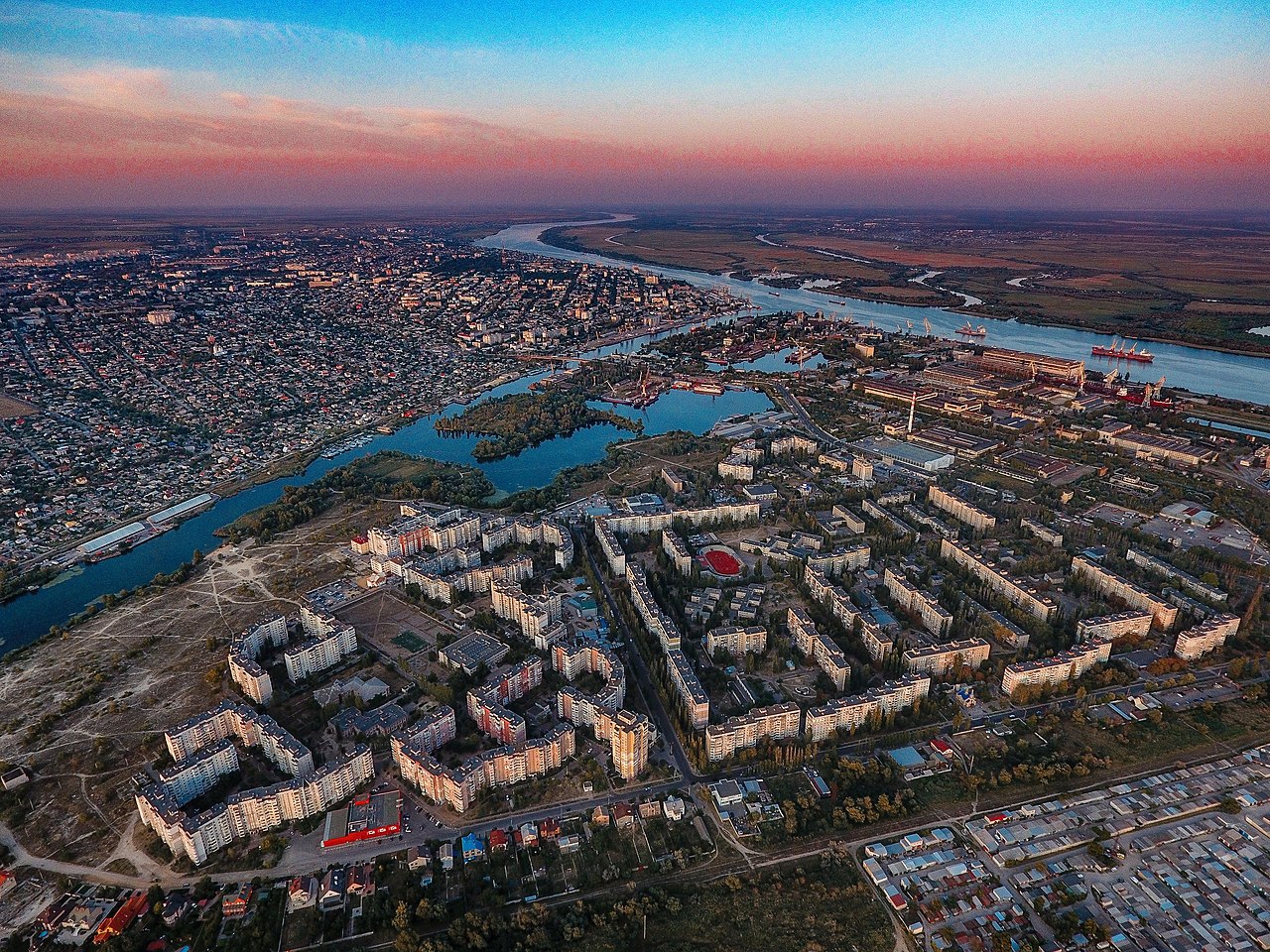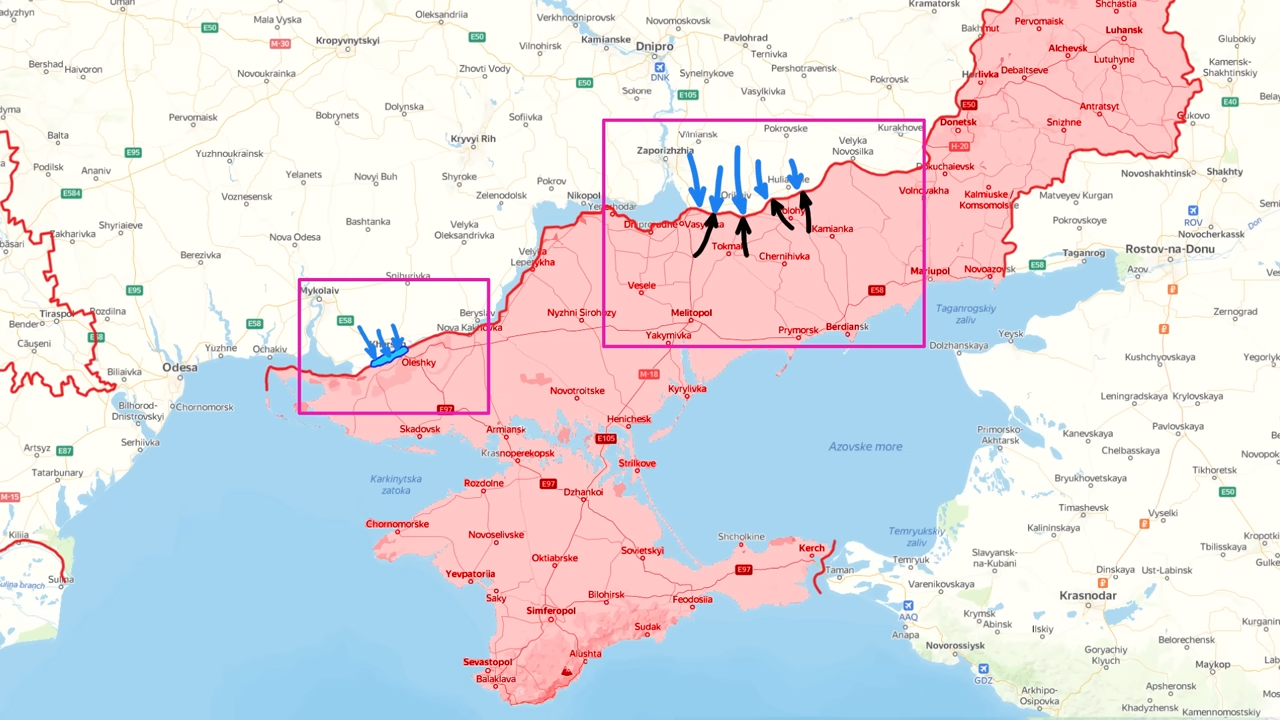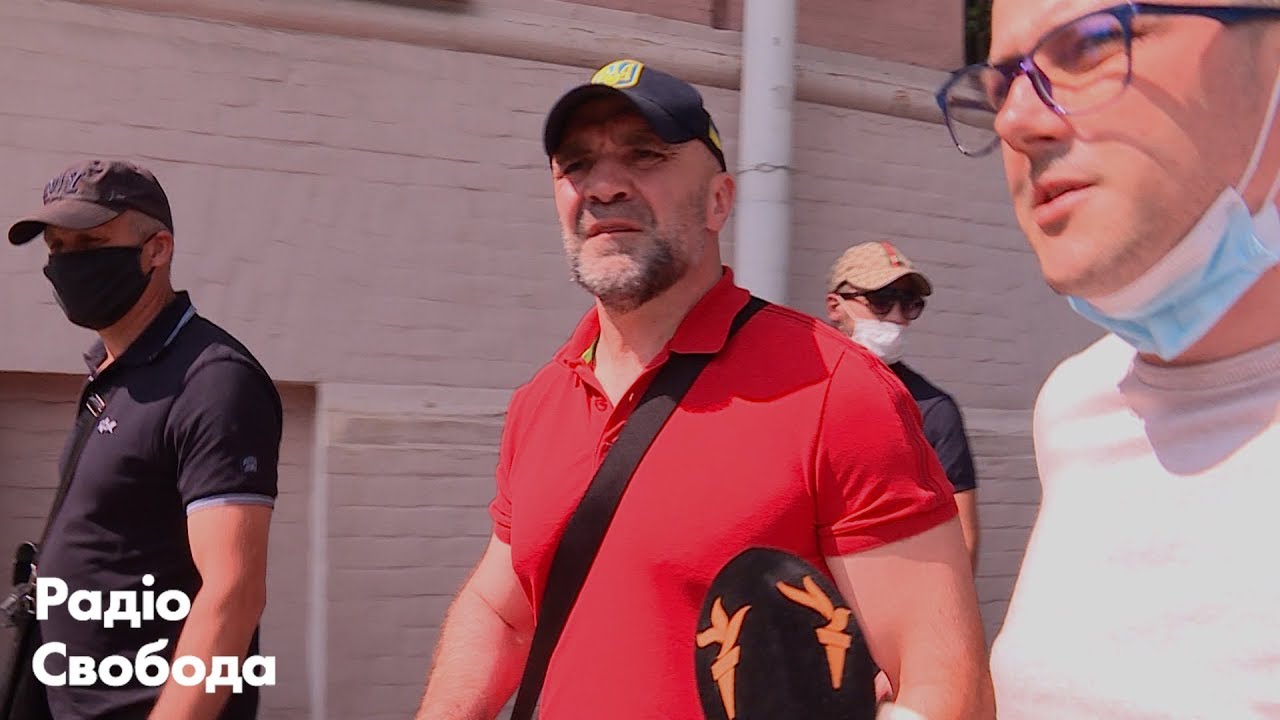In Kherson Oblast, Russians are now trying to assign their representatives to head the municipalities, replace the Ukrainian hryvnia currency with the Russian rouble, enforce the Russian language in education, and finally place their own local authorities, whose task is to suppress the protests in the town. People, however, were still protesting with the latest protest have taken place on 3 April 2022 in Kherson.
"An analog of the Donetsk torture chamber Isolation was launched in Kherson. Russians were abducting and intimidating people for a month, now they have started torturing them," head of the board at https://t.co/I3JlLrU4xS wrote referring to his sources1/2https://t.co/LbjKjQDlEV
— Euromaidan Press (@EuromaidanPress) April 5, 2022
Why did Kherson become the only Oblast center occupied by the Russians?
The answer to that question will come out only after the end of the war. Treason or incompetence could have played an equal role here. It is known that at least one of the two Ukrainian Security Service (SBU) commanders who were discharged from their positions on 31 March 2022, was head of the SBU department in the Kherson Oblast.
There are other concerning details. The Russian invaders met almost no resistance while traversing their first 100 kilometers from Crimea to mainland Ukraine on 24 February. Additionally, there are reports that territorial defense in Kherson Oblast wasn’t properly organized ahead of time, and not enough weapons had been delivered to the Oblast before the invasion.
“In the first days of the war, fighting took place near the Antonivskyi Bridge, which connects Kherson with the left bank of Dnipro river, as well as in the area of Oleshky, Radensk, in the Hola Prystan district, – Journalist from Kherson Ivan Antypenko writes, describing the first Ukrainian resistance. However he also mentions the poor state of readiness of the territorial defense forces. – The topic of Kherson territorial defense deserves a separate investigation, possibly by law enforcement agencies. In the first hours of the attack, both volunteers and members of the defense forces who have had some combat experience came to the local military enlistment office. But they were told to go home.”
Despite the failure to defend the Kherson Oblast, locals in Kherson and smaller towns have protested against the Russian invaders many times, disrupting their plans.
https://twitter.com/euromaidanpress/status/1502971764976062465
Although initially, Ukrainian forces had to retreat to about 100 kilometers from Kherson, by the end of March, they began to reclaim some villages in the Kherson Oblast. Some Ukrainian troops are just 20 kilometers away from Kherson, although it is unclear how quickly it is possible to liberate the city. At the same time, the occupiers are persistent in their attempts to force local authorities to cooperate, and intensify repressions.
Russians don’t have enough manpower to establish full control, but enough to conduct repressions.
No Russians are permanently present in most of the towns and villages of the Oblast. However, they’re in control of road checkpoints around larger cities and are trying to administer several strategically important towns in the region. These include Nova Kahovka, Kherson, and Melitopol in neighboring Zaporizhzhia Oblast. Antypenko told Euromaidan Press that Russians have enough soldiers to maintain several checkpoints on the Oblast main roads, with up to 10 soldiers per post. The military is also present in some villages, mostly in those that are close to the frontline.
“There are few Russian vehicles in Kherson, sometimes Russians drive armored vehicles, or ones stolen from the locals in their attempts to control the city. Occupiers set up roadblocks at the city exits, and periodically install checkpoints inside the city. Russian soldiers are concentrated near the Oblast state administration and Oblast council, as well as some other administrative buildings.”
Russian troops are escalating the terror campaign
Deputy head of Kherson Oblast, Yuriy Sobolevskyi, describes how local authorities were resisting and what terror campaigns followed:
“During the war, the Oblast Council managed to adopt three public statements: “Affirm the support of the Ukrainian President and the fight against the invaders,” “Appeal for a No-fly zone over Ukraine,” and “On the territorial integrity of Ukraine .” The heads of the municipalities refused to work under the enemy flag and continue to follow the Ukrainian laws. Many of the largest enterprises and farmers have ramped up production to meet the humanitarian needs of the local population, instead of building supply chains to Crimea.”
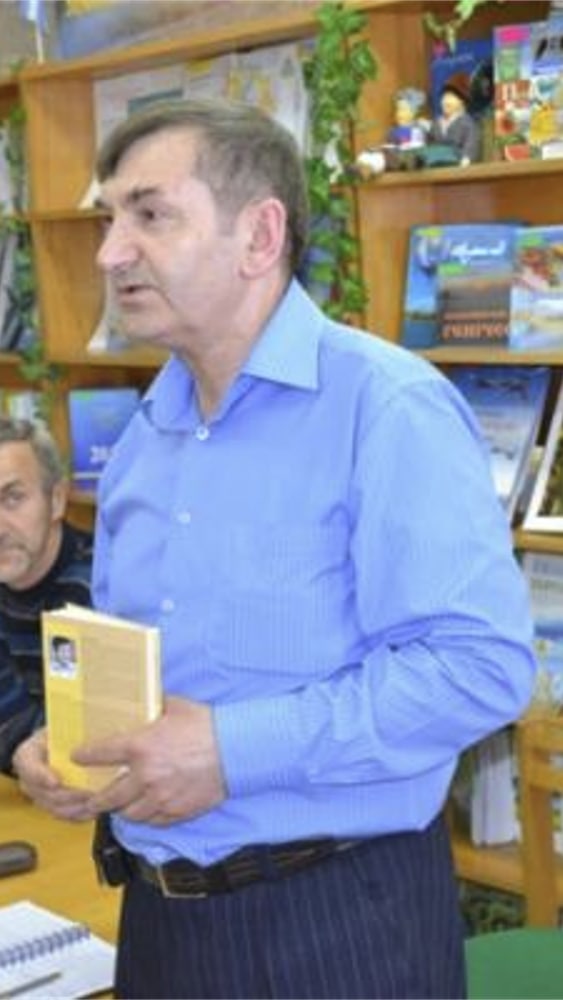
After the initial plans of the Russian invasion forces failed, they switched to large-scale systematic eradication of any resistance. According to Sobolevsky, their actions include:
- Blocking all humanitarian supply routes for deliveries of goods and medicine
- While not immediately removing the Ukrainian state flags from municipal offices, they’ve assigned “watchers” to the heads of each large community, with whom the local authorities are forced to consult
- When encountering people with firm pro-Ukrainian positions, they abduct, search and interrogate them. Several heads of municipalities were forced to resign, while others are being held hostage
- Planning to replace the official flags gradually, so that people would be less inclined to resist
- Kidnapping activists and journalists. The fate of many of them is still unknown
- Directors of two regional theaters were detained and interrogated, and searches were carried out in their homes. The purpose is obviously to harass and intimidate cultural figures and opinion leaders
- Broadcasts of Ukrainian TV channels and radio stations are banned, while Russian state propaganda channels are re-broadcasted.
Abductions and “dialogue” with local Ukrainian authorities
Kherson city mayor reported that he was contacted by the occupiers, as did many other local mayors. At the same time, none of them have publicly recognized the authority of the occupiers or agreed to cooperate. Conversely, the mayors are proclaiming that they stand with Ukraine and are conducting their official duties exclusively in compliance with the Ukrainian law.
Several mayors, representatives of local authorities, directors of cultural institutions and journalists have been abducted. Among the latest cases was the abduction of the mayor of Tavriysk town, on 1 April. In total, more than 30 people have been abducted in Kherson Oblast, although the precise numbers are unknown. Notably, about half of the kidnappings happen in two districts — Hola Prystan and Nova Kahovka. One possible explanation for this could be that Nova Kahovka is a strategic settlement where Russians want to establish tighter control, because of a bridge and a hydroelectric dam over the Dnipro river. Hola Prystan is one of the wealthiest towns of the Oblast, with high pro-Ukrainian sentiment among the locals.
“The head of Stara Zburivka [near Hola Prystan], Viktor Maruniak, who has always had a very clear pro-Ukrainian position, is still being held hostage. For some reason they were really angry with this village, perhaps because they found there somebody with a weapon. The head of Hola Prystan Oleksandr Babych was also abducted. Before that, several more people were abducted from the town. In Nova Kakhovka, the secretary of the city council is still being held hostage somewhere. There is an Ukrainian mayor in the city, but Commandant Vasiliev has also been appointed to oversee the city. This commandant is involved in bullying people, he decides whom to pressure” Antypenko said.
There are few known cases where occupiers have appointed their own local administration, such as in Nova Kahovka. A similar situation exists in Henichesk town.
On 1 April 2022, the Russian military tried to take over in Kahovka. Several dozen armed soldiers entered the administration building. There were several locals with them. Employees of the city executive committee were stripped of their phones and were told that the local authorities could no longer conduct their official duties. The Russian military said that the city will be run by Pavlo Filipchuk, Oleh Bukhovets (the head of the police), and Oleh Havryliuk (the head of the water service). Other city hall employees were offered to cooperate with the “new government”, but rejected the offer and were subsequently fired.

Reports on torture in Kherson Oblast
In the first days of March, some locals claimed that Russian soldiers were raping women in Kherson, though it hasn’t been confirmed by local authorities yet.
First cases of torture of the abductees were also reported. Halyna Lapchuk said that her husband and son were abducted. Her husband, journalist Vitaliy Lapchuk, was forced to confess to being a “terrorist.” Such “confessions” are a part of typical scheme by the Russian FSB security service, the one that they have repeatedly used in occupied Crimea. Halyna Lapchuk wrote:
“My husband returned home at one o’clock. When I saw him, I almost fainted… His face was completely smashed… Then 9 gunmen broke into the house and began a search. They looked into every corner, filmed everything, confiscated phones and 4 of the familiy’s laptops, and stole our SUV from the driveway.”
According to Halyna Lapchuk, she, her husband and the eldest son were then taken for questioning, with bags over their heads. They were brought to Kherson and imprisoned there for several hours. Throughout this time she heard her husband being interrogated.
“Then the investigator came in, and, as I understood it, said that I was allowed to leave. I then started yelling that I didn’t know wether my husband and son were alive… He hesitated for a while, then called someone and my son and I were taken outside. I then asked about my husband. The investigator replied that he confessed to terrorism, and will be taken to Russia for persecution.“
Russian troops against Ukrainian protests
At first, Russian soldiers were not seriously reacting to pro-Ukrainian rallies in Kherson and other cities, including Hola Prystan and Nova Kahovka:
A Ukrainian rally against the Russian occupation has begun in temporarily occupied Nova Kakhovka, Kherson Oblast. 12:00 EEThttps://t.co/qf40jb3x3U
— Euromaidan Press (@EuromaidanPress) March 6, 2022
However, at the end of March, Russians began using stun grenades and shooting into the air to intimidate and disperse protesters. Several people were shot or injured, and the protests became less widespread. One of the latest and most brutal crackdowns took place on 2 April in Enerhodar, which is situated in the neighboring Zaporizhzhia Oblast. It is also the site of Europe’s largest nuclear power plant, which was previously bombarded by the Russian military. The city residents gathered for a peaceful rally in support of Ukraine and were singing the national anthem. Russian soldiers waited a bit and soon started throwing stun grenades at the protesters, eventually arresting some of them. At least four people were wounded, while the number of arrested is unknown.
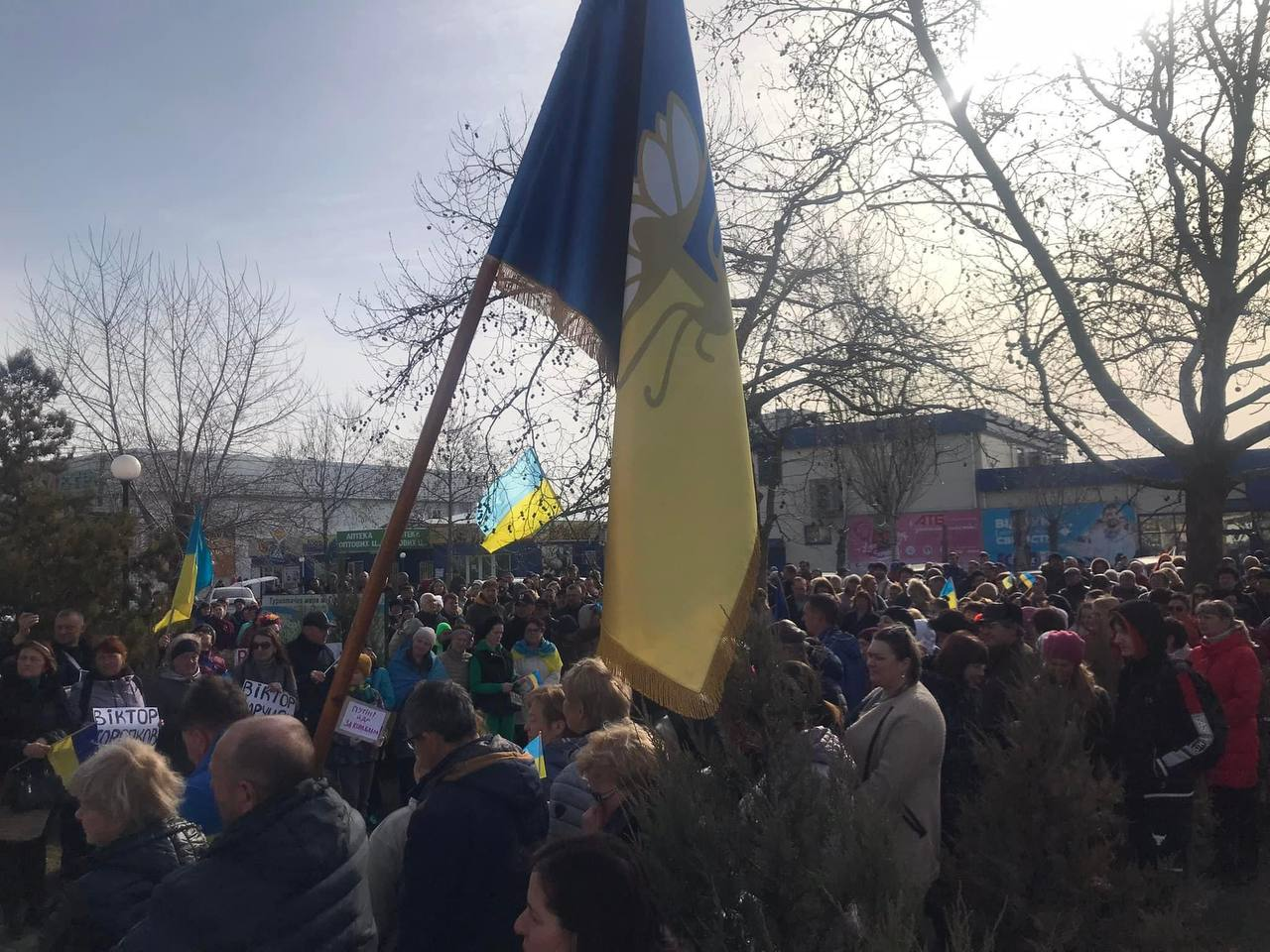
Despite the crackdowns, Ukrainian civilians have continued to protest. A massive rally took place on 31 March 2022 in the small town of Hola Prystan. Locals were demanding the release of their town mayor Oleksandr Babych, and at least six other people, including the head of Stara Zburyivka village, who was abducted by the invaders a few days before.
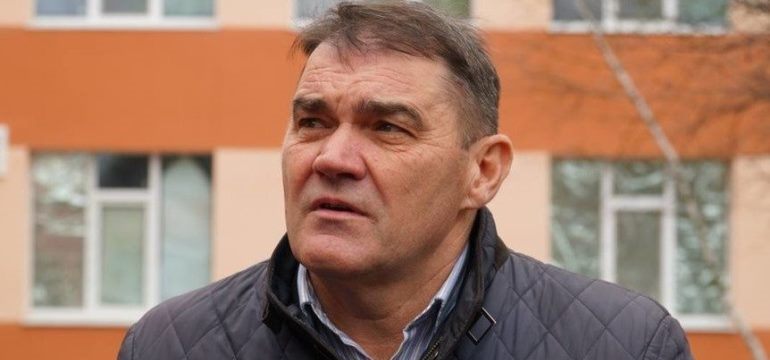
Finally, one more pro-Ukrainian rally took place in Kherson on 3 April 2022:
https://twitter.com/EuromaidanPress/status/1510615156887371784
Attempts to replace the Ukrainian hryvnia currency with the Russian rouble have so far been limited to announcements
Antypenko told Euromaidan Press that the Russian occupiers don’t have the capability to introduce the rouble yet, despite their claims and unsuccessful attempts to do so:
“It is currently impossible to supply enough roubles to the entire region. The amount of hryvnias has so far been sufficient. However, in Henichesk near the Crimea, for example, the occupiers paid to each of the retirees 10,000 roubles. Since there is no place to exchange them, the occupiers themselves have offered to exchange the roubles for hryvnias, but at two times lower exchange rate than normal. In fact, this is how they are attempting to make profit themselves.”
Armed resistance in Kherson Oblast was insignificant mainly due to a lack of weapons
“There is no organized armed resistance. Some people are looking for weapons. The occupiers obtained the register of gun owners and visited them to check. In some cases they were damaging weapons. In one village, men shot two Russians who remained behind the column for some reason. One was killed and the other escaped… Also people siphoned off diesel fuel and gazoline from the invaders’ vehicles. Once a fuel truck went missing.” – Antypenko concludes on this matter.
In many settlements, and especially in the larger towns, locals have established their own patrols, which are presumed to be unarmed. Local mayors from Oleshky and Hola Prystan have stated that the patrols are required to prevent looting. However, it is known that the true purpose of these patrols is to defend civilians from crimes committed by the Russians.
The occupiers have not explicitly banned these patrols, but have often attempted to disband them. In Oleshky the invaders abducted three and wounded one of the members of the local group that was patrolling the streets. Russian forces have arrested several locals accusing them of sabotage. The occupiers are not permanently present in all of the towns, however. For example, as of 1 April, “all roadways leading into the town are unobstructed, and no foreigners are present in the town,” council member from Hola Prystan, Yuriy Zelenin, said.
Russians have also been imposing an information blackout over the Kherson Oblast. Only Russian state TV is allowed to be broadcast there, while the internet and phone services are often disrupted.





